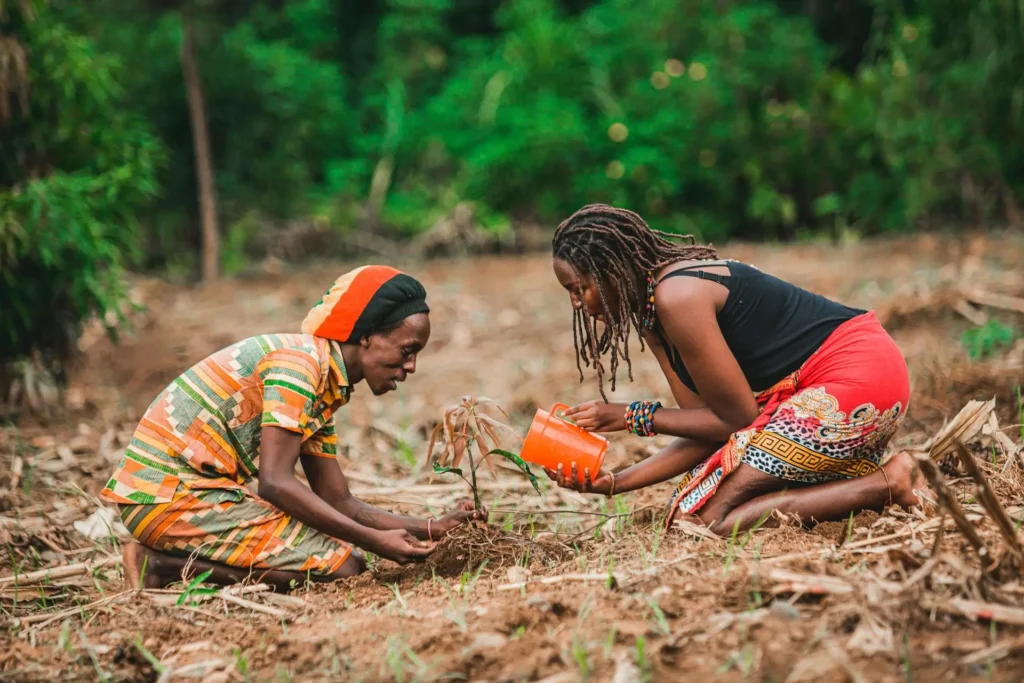Strategies to Combat Food insecurity must begin at the grassroots. In Sierra Leone’s rural districts, smallholder farmers face unpredictable weather, limited resources, and market barriers. By adopting strategies to combat food insecurity that are evidence‑based and community‑driven, RRDF empowers families to secure reliable harvests year after year.

1. Strengthening Local Agriculture
Investing in smallholder farmers is fundamental to any strategy to combat food insecurity. RRDF works directly with farming cooperatives to:
- Provide improved seeds and seedlings
- Train on sustainable land‑preparation techniques
- Establish demonstration plots for peer learning
These initiatives increase yields by up to 30% and foster self‑reliance.
2. Implementing Climate‑Smart Farming
With climate vulnerability high, strategies to combat food insecurity must include climate‑resilient practices:
2.1 Agroforestry Integration
Planting trees alongside crops reduces erosion and enriches soil fertility.
2.2 Rainwater Harvesting
Construction of simple water catchment systems ensures irrigation during dry spells.
By combining traditional knowledge with innovative methods, communities adapt to changing rainfall patterns.
3. Enhancing Women’s Participation
Women play a central role in Sierra Leone’s rural economy. One key strategy to combat food insecurity is to elevate women’s roles through:
- Leadership training in village savings groups
- Access to micro‑loans for purchasing inputs
- Nutrition education targeting mothers and caregivers
Empowered women reinvest up to 90% of their earnings into household wellbeing, multiplying impact.
4. Improving Post‑Harvest Management
Losses after harvest can reach 40% without proper handling. RRDF’s strategies to combat food insecurity include:
- Training on proper drying and storage techniques
- Distribution of hermetic bags to prevent pests
- Building community silos for bulk storage
These reduce spoilage, ensuring families have food reserves during lean seasons.
5. Leveraging Data & Research
Data‑driven interventions form the backbone of our strategy to combat food insecurity. RRDF conducts:
- Baseline surveys to identify vulnerability hotspots
- Periodic monitoring to track crop performance
- Impact assessments shared on our Food Security Program page
Partnering with the FAO’s latest guidelines helps us align with global best practices. Learn more at the FAO’s food security portal:
<a href=”https://www.fao.org/food-security/en” target=”_blank” rel=”noopener noreferrer”>Food and Agriculture Organization – Food Security</a>
Case Study: RRDF’s Food Security Program
Alt text: Strategies to Combat Food
In 2024, RRDF launched a pilot across three chiefdoms in eastern Sierra Leone. Key outcomes after six months:
- 35% increase in average maize yield
- 20% reduction in post‑harvest loss
- 50 women trained in storage management
“I never imagined our little plot could feed my family all year. RRDF showed us the way.”
– Mariatu Kamara, beneficiary farmer
Conclusion & Call to Action
By combining these strategies to combat food insecurity, rural Sierra Leone can transition from vulnerability to resilience. You can help:
- Donate to support our next planting season
- Volunteer on our research teams
- Share this post to raise awareness
Together, we’ll build a future where no community goes hungry. 👉 Join RRDF Today
Read up on global best practices at FAO: https://www.fao.org/food-security/en
